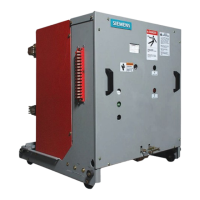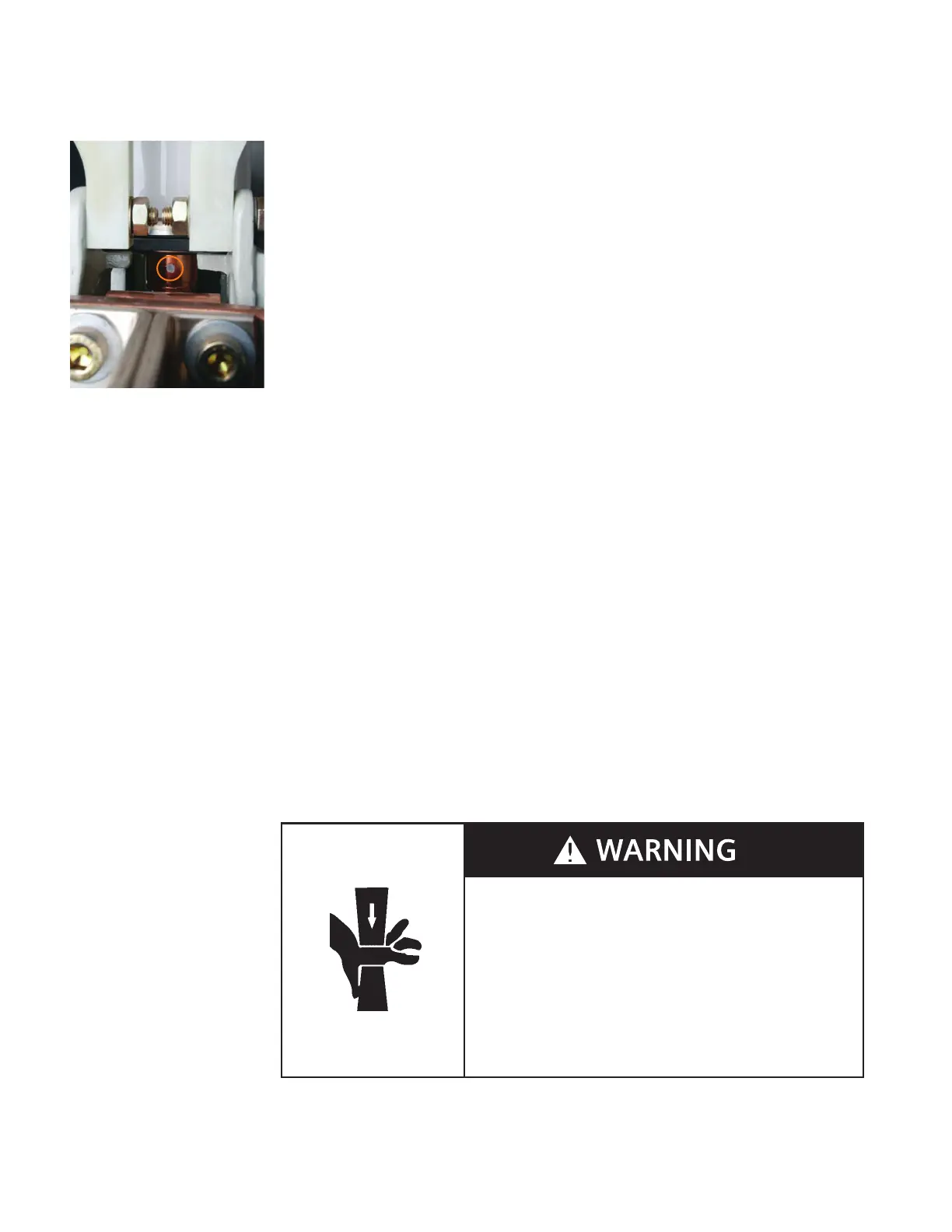42
Fastener check
Inspect all fasteners for tightness. Both
locknuts and retaining rings are used. Replace
any fasteners that appear to have been
frequently removed and replaced.
Manual-spring charging and contact-
erosion checks
Perform the manual-spring charging check
contained on page 12 in the section
"Installation check and initial functional
tests." The key steps of this procedure are
repeated here.
1. Insert the hand-charging crank into the
manual-charge socket at the front of the
operator control-panel. Turn the crank
clockwise (about 48 revolutions) to
charge the closing spring. Continue
cranking until the CHARGED flag appears
in the window of the spring-indicator.
2. Press the close (black) pushbutton. The
contact-position indicator on the
operator-control panel should indicate the
circuit breaker contacts are CLOSED.
3. Perform the contact-erosion check.
Contact erosion occurs when high-fault
currents are interrupted or when the
vacuum interrupter is nearing the limit of
its contact life. Determination of
acceptable contact condition is checked
by the visibility of the white-erosion mark
(refer to Figure 36: Contact-erosion check
mark dot circled in orange (shown with
circuit breaker open)).
The white-erosion mark is located in the
keyway (or slot) on the movable stem of
the vacuum interrupter, near the plastic-
guide bushing.
The contact-erosion check procedure is:
A. Be sure the circuit breaker primary
contacts are CLOSED.
B. Observe the white-erosion mark of
each pole (refer to Figure 32: Trip-
control pushbutton (lower button) on
page 39). When this mark is visible,
contact wear is within acceptable
limits.
4. Press the red trip pushbutton after
completing the contact-erosion check.
Visually verify the DISCHARGED condition
of the closing springs and the circuit
breaker contacts are OPEN.
5. Press the black close pushbutton. Nothing
should happen. The manual-spring check
should demonstrate smooth operation of
the operating mechanism.
Electrical-control checks
The electrical controls of the type GMSG
vacuum circuit breaker should be checked
during inspection to verify absence of any
mechanical damage, and proper operation of
the automatic-spring charging and close and
trip circuits.
Unless otherwise noted, all of these tests are
performed without any control power applied
to the circuit breaker.
Figure 36: Contact-erosion check
mark dot circled in orange (shown
with circuit breaker open)
High-speed moving parts.
Can result in serious injury.
Tripping spring is charged. If trip latch is moved, the stored-energy
springs will discharge rapidly.
Stay clear of circuit breaker components subject to sudden, high-speed
movement.

